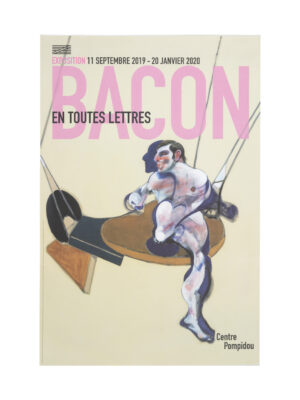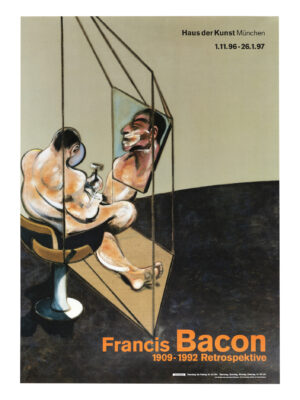Francis Bacon (1909 – 1992) was an Irish painter. He is known for his stark and disturbing images. Rejecting various classifications of his works, Bacon stated that he strove to render “the brutality of the facts.”
Bacon said he saw images “in series,” and his output, which numbers some 590 extant paintings along with many others he destroyed, typically focuses on a single subject for extended periods, often in triptych or diptych format.
Bacon did not begin painting until he was in his thirties, having lived in the late 1920s and early 1930s as an interior decorator, bon vivant and gambler. He claimed that his artistic career had been delayed because he had spent too much time searching for subjects that could sustain his interest. His breakthrough came with the 1944 triptych Three Studies for Figures at the Base of a Crucifixion, which sealed his reputation as a uniquely bleak witness to the human condition. From the mid-1960s he produced mainly portraits of friends and drinking buddies, in the form of single panels, diptychs or triptychs. After the suicide of her lover George Dyer in 1971 (recalled in her The Black Triptychs and in a series of posthumous portraits) her art became more somber, inward, and fearful of the passage of time and death. The culmination of his later period is marked by the masterpieces Study for Self-Portrait (1982) and Study for a Self-Portrait – Triptych, 1985-86.
Despite his dark existentialist outlook, Bacon was charismatic, articulate and cultured. As a bon vivant, he spent his middle age eating, drinking, and gambling in Soho with like-minded friends, including Lucian Freud (although they quarreled in the mid-1970s, for reasons neither has ever explained), John Deakin, Muriel Belcher, Henrietta Moraes, Daniel Farson, Tom Baker, and Jeffrey Bernard.
Since his death, Bacon’s reputation has grown steadily, and his work is among the most acclaimed, expensive, and sought-after on the art market.































